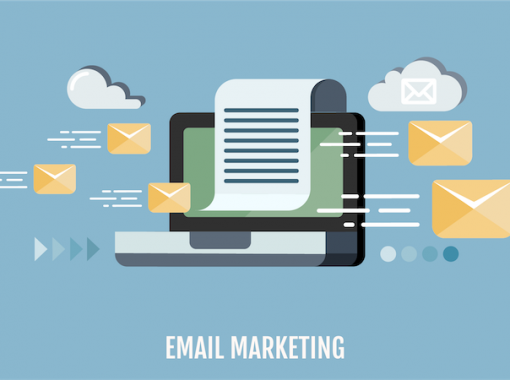
Email marketing is one of the most effective forms of content marketing, with an impressive $36 generated for every $1 spent (according to the Direct Marketing Association).
With an ROI like that, you might consider investing most of your marketing budget into email campaigns. But is that necessary?
While the average marketing team allocates roughly 16% of its overall budget to email marketing, the amount of money you should invest depends on your starting point and goals.
We’ll show you what you need to build a strategy from the ground up and how much money to budget along the way.
Build a List of Subscribers
Determining how much to spend on email marketing starts by analyzing your list of subscribers. Typically, marketers fall into one of two categories:
- They’re starting from scratch and need to build a new list of engaged subscribers.
- They have a list of active customers but have never used it for email marketing campaigns.
If you’re starting fresh, the good news is you don’t have to spend much to gain subscribers organically. But, it does take a lot of hard work and patience.
You’ll need to encourage website visitors and existing customers to sign up for your newsletters through:
- Website pop-ups.
- Dedicated landing pages.
- Transaction emails.
- Exclusive discounts for subscribers.
- Social media content.
However, if you already have a customer list, you need to “scrub” your list to ensure you have accurate contact information for each subscriber. Doing so will give you peace of mind knowing you’re maximizing performance by sending campaigns to the right subscribers.
To do this, consider investing in tools like MailBox Validator or Validity. These tools have a free trial followed by a “per email address” or per-month fee.
Choose Your Email Marketing Platform
Another cost to consider is your email marketing platform. This is what you’ll use to create and send your email campaigns to subscribers.
Plus, platforms like Mailchimp and Constant Contact also offer a wide range of features like:
- Campaign workflow builders.
- Email list segmentation.
- eCommerce integration and functionality.
- Reporting and analytics.
- Drag & drop email design tools.
And that’s only scratching the surface!
Best of all, email marketing platforms usually offer a 14- or 30-day free trial. This means you can experiment with multiple platforms at once to discover which works best for your goals.
When selecting an email marketing platform, take a moment to write down exactly what tools or features you’ll need to execute your strategy. Then, compare each platform and decide which offers you the functionality you need at a price point you can afford.
On average, basic email marketing platform pricing begins around $10 to $20 per month. Plans can escalate to as high as $200+ per month, based on subscriber list size and included functionality.
Design & Create Email Marketing Campaigns
Most marketers spend the majority of their email marketing budget on email design and content.
This is the area of your strategy with which customers see and interact. You don’t want to skimp on the content design and send emails that don’t load properly or contain unnecessary information.
If you have an internal team of designers, writers, and developers, work with your teams to design, develop, and create a fully functional email marketing template design that works across email clients and conveys your message.
If these resources are not available to you, you have to hire contractors to get the job done. Sure, you can go the DIY method … but do you have the time, patience, and energy to do it all yourself?
Email marketing platform plans include various templates and designs, but these won’t always work for your goals. This is why it’s critical to hire a contractor or two to build a perfect email template for your needs.
The cost to hire freelance writers, designers, and email developers will vary based on each contractor’s:
- Experience.
- Preferred pricing structure (hourly vs. fixed pricing).
- Availability.
Additionally, the scope of the project will also dictate the price as smaller projects such as a single design or template will cost less than a full-fledged email marketing campaign.
Expect to spend anywhere from $25 to $150+ per hour or $500 to $1,000+ total on email marketing contractors.
If the price sounds high, that’s because it is — and it should be. The content, design, and functionality of your emails are the foundation of your entire strategy.
You do not want to cut corners when it comes to this area of your campaign. Your subscribers will know the difference.
Invest in Reporting Tools
When it comes to email marketing, there are ways to save money. Free versions of email marketing platforms, built-in templates, and previously written content are all fine ways to reserve your funds.
But, if you’re only able to spend your hard-earned budget on one element of an email marketing strategy, invest in solid reporting tools.
These tools will help you make critical decisions regarding your overall strategy, including:
- How to improve click-through rates: Improved design, better functionality, new content, etc.
- Which audiences are interacting with your email content: Are you sending the right content to the right audience? If not, how can you improve this?
- The results of your overall sales efforts: Are leads effectively converting to the next step of the sales cycle? What adjustments can you make to your emails to remedy this?
Email marketing platforms like Mailchimp, HubSpot, and Salesforce include a wealth of reporting tools. But you can dive deeper into your analytics with tools like:
- AtomPark Software ($13 per month).
- Cirrus Insight ($27 per month).
- NeverBounce ($0.008 per email).
- Campaign Monitor ($9 per month for up to 2,500 emails).
- Customer.io ($150 per month).
Even if you use free email platforms and campaign templates, the data and analytics from these tools will tell you how to maximize overall ROI.
Implement Call Tracking to Improve Email ROI
We’ll let you in on a secret, too.
Call tracking can vastly improve your email marketing strategy’s ROI.
Email marketing tools can only track the online results of a campaign. But what about the phone leads generated from an email?
Implementing a call tracking number into your email marketing efforts will effectively improve your ROI by including offline leads in the overall results. With a call tracking number, you’ll know exactly which emails drove customer phone calls — along with far more quantitative and qualitative data.
Make sure your email marketing budget includes investing in a call tracking number for the best results!











